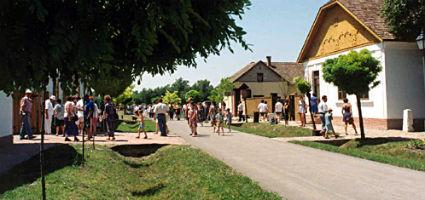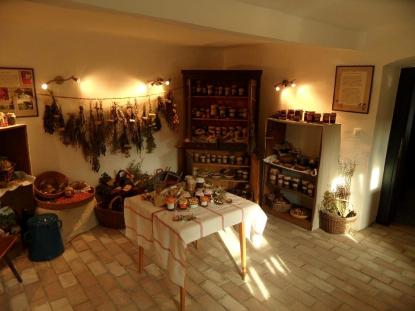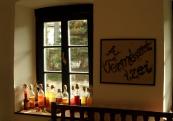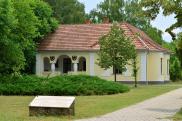2024. May 3. Friday
Ópusztaszer National Historic Memorial Park - Ópusztaszer
 |
Address: 6767, Ópusztaszer Szoborkert 68.
Phone number: (62) 275-133 /103, (62) 275-133 /104
E-mail: info@opusztaszer.hu
Opening hours: 01.04-30-10.: Tue-Sun 10-18
01.11-30.03.: Tue-Sun 10-16 (Skanzen, external exhibiton closed) The current fare for those interested informed about the institution's website: www.opusztaszer.hu |
The exhibition has closed for visitors.
2015.08.15. - 2015.10.01.
It is not there only to watch, it there to taste it, too – This will characterize the exhibition where we can get important information about what kind of wild plants were gathered by our ancestors in our forests, meadows, marshes and how these were used as an ingredient in food, spice, to make beverages or even for preservation. Today the knowledge of our ancestors more and more comes to the fore, the ancient philosophy which says: "let us be closer to nature."

The exhibition wants to promote health-oriented diet, which is about nature conservation at the same time, and is complemented by showing today's domestic and craft practices.
Do you know what was used like potato in the Bronze Age? The exhibition will reveal that and also what was used to make flour or vinegar, or what purpose did the hop bran serve.
The visitors will also find edible plant preparations, photos, collected fruits, dried herbs, wild fruit preserves, vinegar, jams and other products, respectively. Information boards will help visitors get a little insight into how rich forests and natural habitats are in edible plants, not only herbs. The exhibition also reveals the method of collection that not all species and not all plant parts are edible, that there are poisonous nuts, leaves, sometimes only the flowers are edible, and it does matter how they are prepared so that they are safe to eat.

The exhibition wants to promote health-oriented diet, which is about nature conservation at the same time, and is complemented by showing today's domestic and craft practices.
Do you know what was used like potato in the Bronze Age? The exhibition will reveal that and also what was used to make flour or vinegar, or what purpose did the hop bran serve.
The visitors will also find edible plant preparations, photos, collected fruits, dried herbs, wild fruit preserves, vinegar, jams and other products, respectively. Information boards will help visitors get a little insight into how rich forests and natural habitats are in edible plants, not only herbs. The exhibition also reveals the method of collection that not all species and not all plant parts are edible, that there are poisonous nuts, leaves, sometimes only the flowers are edible, and it does matter how they are prepared so that they are safe to eat.



